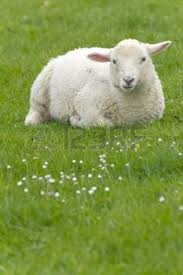Effects Of Grazing On Silage Quality
5 April 2017
 Work by Teagasc in Ireland showed that if you want quality silage, pre grazing before shutting fields up can have an effect by removing dead and senescent material. They defoliated swards to varying heights in December and looked at effects on May and July silage cuts. Taking the sward height down to 5 cm in December significantly improved the digestibility of ensiled material by 7% (worth an extra 1.25 ME). Although there were penalties in terms of the quantity of silage produced – up to 20% less. However it was found in years when there was good winter growth yield was not significantly reduced and in all cases the combined yield of a December and May cut was greatest.
Work by Teagasc in Ireland showed that if you want quality silage, pre grazing before shutting fields up can have an effect by removing dead and senescent material. They defoliated swards to varying heights in December and looked at effects on May and July silage cuts. Taking the sward height down to 5 cm in December significantly improved the digestibility of ensiled material by 7% (worth an extra 1.25 ME). Although there were penalties in terms of the quantity of silage produced – up to 20% less. However it was found in years when there was good winter growth yield was not significantly reduced and in all cases the combined yield of a December and May cut was greatest.
Many farms graze silage ground in spring before cutting silage from it. So Grange workers defoliated swards in March and looked at effects on silage yield and quality. Here the effect on silage quality was again positive but cutting to 5 cm was better than 10 cm.
These trials used cutting to simulate grazing so results have to be used with caution, I see a lot of dead material in the bottom 5 cm of pasture in December. I would guess that grazing hard to around 2.0 cm with sheep (residual of 1,000 kg) would remove this and increase silage quality by up to 2 MJ ME/kg DM. In spring sheep grazing down to a higher residual of 4 cm (1,500 kg) would be hard enough on ewes in early lactation but would set up silage fields for a high quality cut. This would lower the cost of ewe feed in late pregnancy by cutting out the need for energy supplements. Target 1 bale per 4 ewes
John Vipond, Sheep Specialist
Sign up to the FAS newsletter
Receive updates on news, events and publications from Scotland’s Farm Advisory Service
